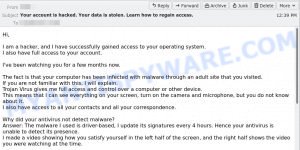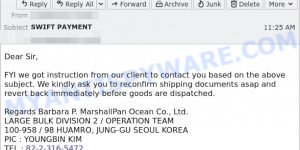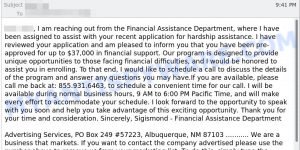Received an email claiming to have ‘very bad news’ about your private data? Before you panic, it’s essential to recognize that you might just be one of many targeted by a widespread deceptive online scam. This particular scheme plays on your worst fears—claiming to have accessed your personal information, controlled your webcam and microphone, and captured compromising videos of you. But there’s a catch: for a sum of money, usually demanded in Bitcoin, the scammers promise to wipe everything clean. While these threats may seem dire and the language technologically advanced, in most cases, it’s just a crafty attempt to manipulate your emotions. To delve deeper into the intricacies of this scam and learn how to safeguard yourself, keep reading.
Here’s an example of the “I have very bad news for you” email:
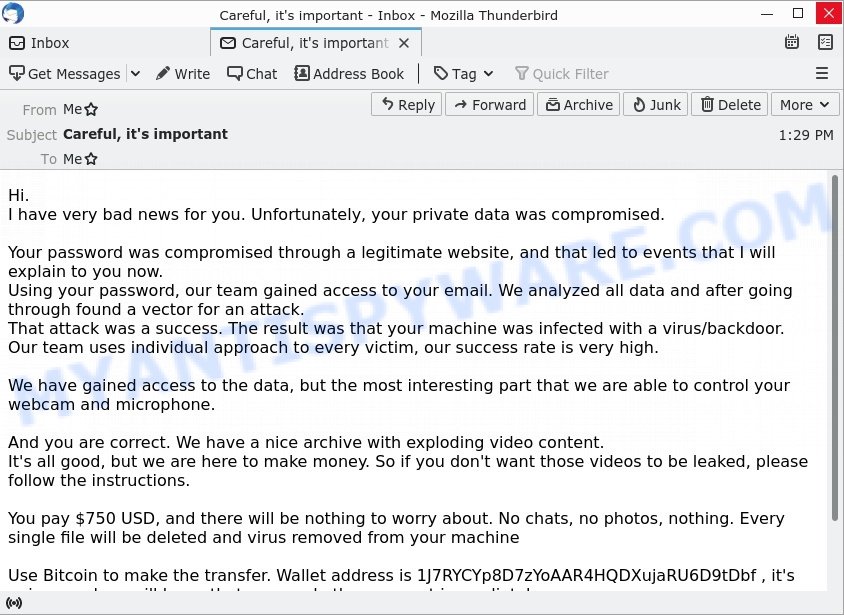
Table of Contents
Is this a scam email?
YES. This email falls under the category of what’s known as “sextortion” scams, aimed at inciting fear and urgency in the victim. It uses threats of compromising data exposure to coerce the recipient into paying a ransom. These scams have been circulating for years, targeting numerous individuals with similar messages.
Red-Flags Indicating It’s a Scam:
- Generic Claims: The email does not provide specific details about which “legitimate website” your password was supposedly compromised on.
- Urgency Push: It creates an artificial deadline, stating you have “2 days to make the transfer.”
- Payment in Bitcoin: Scammers often ask for payment in cryptocurrencies like Bitcoin because it’s harder to trace.
- No Proof Provided: Although they claim to have compromising videos, they do not offer any evidence or proof.
- Grammatical Errors: The language and phrasing used (“We have a nice archive with exploding video content”) are awkward and not typical of professional communications.
In summary, 🚫 If you encounter such emails, it’s crucial to remain calm and not engage with the sender. Remember, these are empty threats designed to exploit your fears. It’s always best to protect your online presence and be wary of such tactics. 🛡️ Always ensure the safety of your devices, change passwords regularly, and be cautious about sharing personal information online.
How the scam works
First off, you might wonder, “How did they send an email from my own address?” This trick is called spoofing. 🕵️ Scammers can make an email look like it’s from any address, even yours. It’s a way to trick you into thinking they have control over your email, even if they don’t. This starts the scam by making you worried.
Next, they use scary messages. 🚫 They send out lots of these emails, hoping that a few people will get scared and believe them. They say they got your private info from some website, but they don’t say which one. This makes you think, “What if it’s true?”
Then, they tell a made-up story about how they got deeper into your computer. 🎭 They claim they put bad software on it, which lets them see and hear what you do. They even say they have videos of you. But remember, they haven’t shown any proof.
Finally, they ask for money. 💰 They want you to pay them fast, usually with a digital currency like Bitcoin because it’s hard to trace. They set a short time limit to rush you, hoping you’ll pay before thinking it through.
The email read as follows:
I have very bad news for you Email Scam
Found a new scam email:
Hi.
I have very bad news for you. Unfortunately, your private data was compromised.Your password was compromised through a legitimate website, and that led to events that I will explain to you now.
Using your password, our team gained access to your email. We analyzed all data and after going through found a vector for an attack.
That attack was a success. The result was that your machine was infected with a virus/backdoor. Our team uses individual approach to every victim, our success rate is very high.We have gained access to the data, but the most interesting part that we are able to control your webcam and microphone.
And you are correct. We have a nice archive with exploding video content.
It’s all good, but we are here to make money. So if you don’t want those videos to be leaked, please follow the instructions.You pay $750 USD, and there will be nothing to worry about. No chats, no photos, nothing. Every single file will be deleted and virus removed from your machine
Use Bitcoin to make the transfer. Wallet address is 1J7RYCYp8D7zYoAAR4HQDXujaRU6D9tDbf , it’s unique and we will know that you made the payment immediately.
You have 2 days to make the transfer, that’s reasonable.
Take care.
All in all, this scam uses tricks to make you scared and rushed. If you receive an email like this, do not engage with the scammer and do not send any money. Instead, delete the email and report it to the relevant authorities. It is also important to ensure that your computer has up-to-date anti-virus software and that you use strong, unique passwords for all of your accounts to reduce the likelihood of falling victim to scams like this.
Examples of such scams
The “I have very bad news for you” email scam is just one of the many deceptive schemes that prey on individuals’ fears and exploit their privacy concerns. Unfortunately, this type of scam is not unique, and there are various similar scams circulating online.
By examining these examples, we can better recognize the warning signs and arm ourselves with knowledge to avoid becoming victims of fraudulent schemes. Take a closer look at the following scams: I RECORDED YOU Email Scam, Your Private Information has been Stolen Email Scam, and I am a professional hacker EMAIL SCAM and let’s learn how to safeguard ourselves from their deceitful tactics. Remember, knowledge is power.
- Geek Squad Email Scam (May 2023)
- Your account is hacked. Your data is stolen. Email Scam
- Reconfirm Shipping Documents Scam email
- Cash Settlement Awarded Email Scam
- Financial Assistance Department Email Scam
Should you pay?
No, you should not pay the ransom demanded by the scammer. Remember that this is a scam and paying the ransom will only encourage the scammer to continue their criminal activities! Additionally, paying the ransom can make you a target for future scams. It is important to stay vigilant and protect your personal information from such scams by using strong and unique passwords, enabling two-factor authentication, and regularly updating your computer’s security software. If you receive such an email, it is best to report it to the authorities and your email provider.
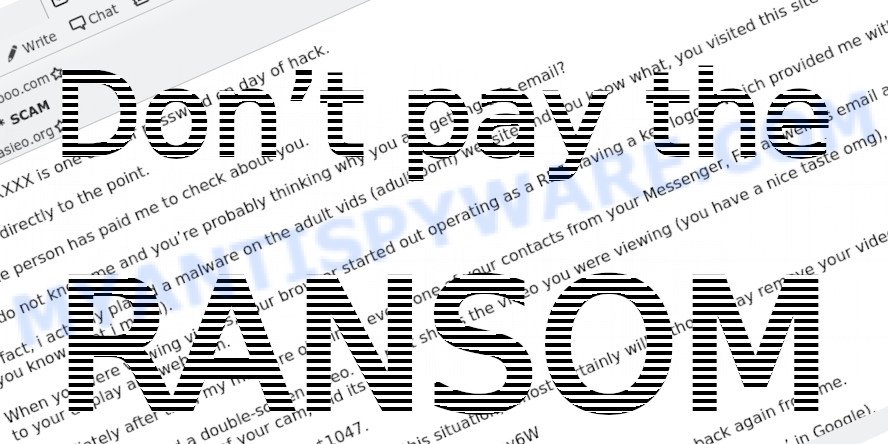
What to Do if You Receive the Email
Receiving the “I have very bad news for you” email can be deeply unsettling, but with the right steps, you can ensure safety and peace of mind.

Here’s a specific guide on handling this scam:
Begin by reminding yourself to stay calm. The email is crafted to elicit panic, pushing recipients into rash decisions. Recognize its true nature—a manipulative attempt to exploit fear.
Resist any impulses to pay. Even if you’re tempted to make the problem go away, understand that payment doesn’t guarantee safety. It merely emboldens the scammer, possibly marking you as an easy target for future deceptions.
Do not engage with the scammer. Replying or trying to open a dialogue can inadvertently give away more information, or signal that your email is active, making you a prime candidate for further scams.
Seeing a familiar password can be particularly jarring. If the scam email mentions a password you recognize, it’s essential to check its source. Use services like haveibeenpwned.com to see if your email or credentials have been compromised in any past data breaches.
Subsequent to that, update your passwords. Always choose strong, unique combinations and activate two-factor authentication on platforms that support it.
As a precaution, run a comprehensive security scan on your device. While the scam email’s claims about malware are usually baseless, this step ensures your system remains clean and threat-free.
Report the email to relevant authorities (e.g., FTC). Sharing details with your local law enforcement or cybercrime units can contribute to ongoing investigations and aid in the crackdown on such malicious activities.
Lastly, spread awareness. Inform friends, colleagues, and family about the scam, equipping them with the knowledge to recognize and sidestep such threats. Knowledge, shared and acted upon, diminishes the effectiveness of these scams, making the digital world a bit safer for everyone.
Threat Summary
| Name | I have very bad news for you |
| Type | Phishing/Sextortion |
| Ransom amount | $750 USD (in Bitcoin equivalent) |
| Bitcoin Address | 1J7RYCYp8D7zYoAAR4HQDXujaRU6D9tDbf |
| Fake Claims | Compromised data, webcam access, malware/backdoor installed |
| Disguise | Allegedly from the victim’s address (spoofed) |
| Damage | Psychological distress, potential financial loss if ransom is paid |
| Distribution | Mass emailing, likely from a purchased or hacked email list |
| Tactics | Fear induction, urgency, deception |
| Variations | Different ransom amounts, varying email content, alternative cryptocurrencies for payment |
| Prevention Tips | Use strong, unique passwords; enable two-factor authentication; be skeptical of unsolicited emails; never pay ransoms |
| Reporting Info | Forward to the Anti-Phishing Working Group at reportphishing@apwg.org; Report the scam to relevant authorities (e.g., FTC); Share information about the scam with friends and family to raise awareness; Monitor online accounts for any suspicious activity |
Conclusion
The “I have very bad news for you” email scam is a clear example of how cybercriminals play on our fears to make a quick profit. By using tricks like sending emails from our own address and making bold claims without proof, they hope to scare us into paying money. But by understanding their tactics, being cautious with our online activities, and never making hasty decisions, we can stay one step ahead. Remember, staying informed and alert is our best defense against such schemes. Always think twice before reacting to alarming emails and prioritize your online safety.

